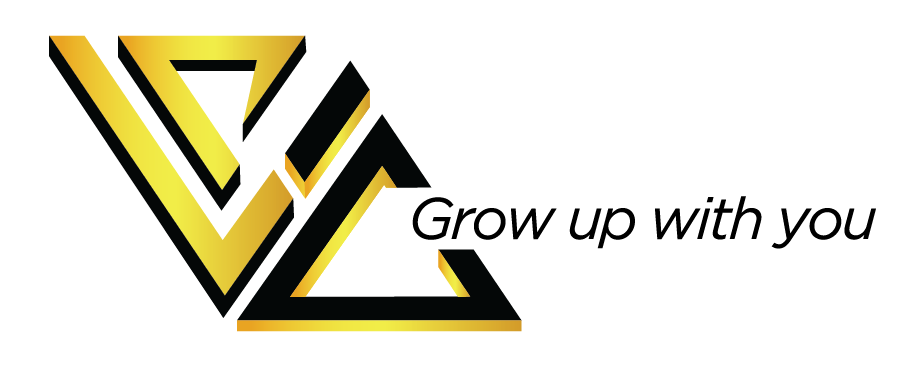The inverter plays an important role as the brain in the solar power system. The main function of the inverter is to convert DC power into AC electricity generated from the solar panels themselves. Today, we will discuss solar inverters and learn the pros and cons.
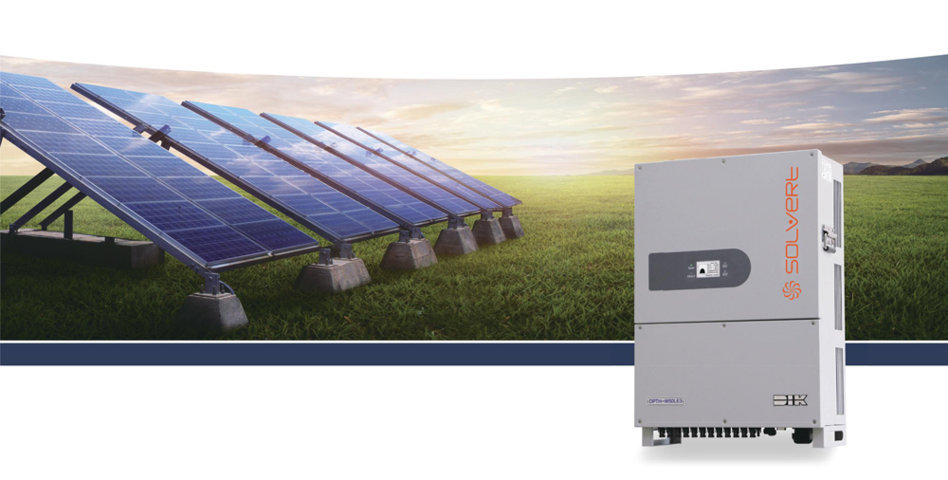
1 – What is a solar inverter?
A solar system includes many devices such as panels, battery center racks, inverters, backup batteries, 2-way motors, protection boxes and connector cabs, etc. In which, the inverter plays a particularly important role. important and necessary for the solar system.
The inverter of a solar energy system is also known as a Solar Inverter, which is a device used to convert direct current into alternating current. That is, solar panels produce DC currents and inverters will help convert those DC currents into AC electricity that can be used for appliances and electronics in the home. .
There are 3 types as follows:
+ First: Grid tie inverter: This type is for the commonly used grid-tied system on the market.
+ Second: Storage inverter (Off grid inverter): Used for independent systems that do not need grid electricity.
+ Third: Grid and storage inverter (Hybrid inverter): For systems with both storage and grid connection.
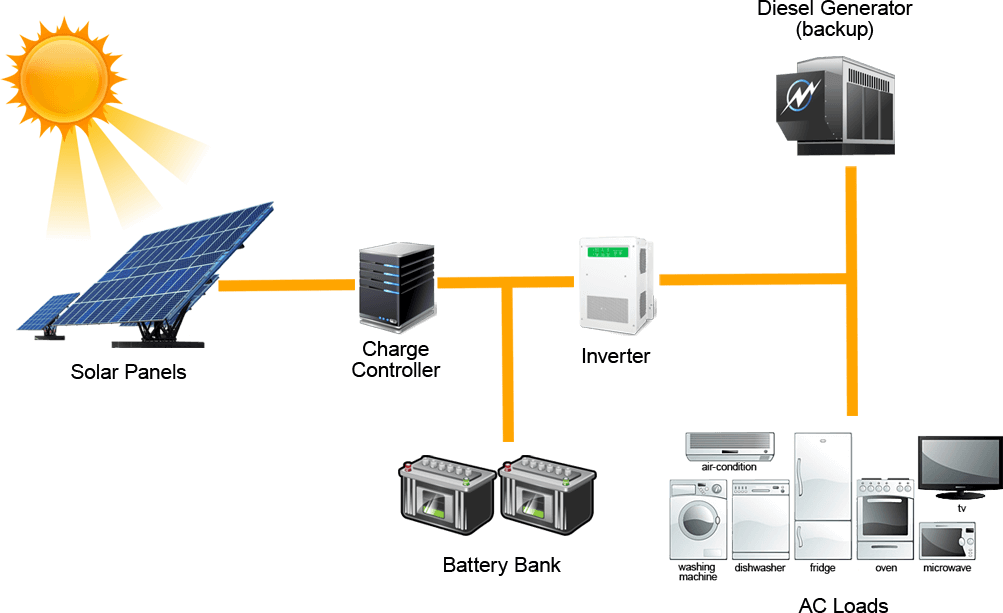
2 – Working principle of solar inverter
The inverter uses DC power from the solar panel and converts it to AC power. To carry out this process, it needs the support of the IGBT suite. When devices are connected to an H-bridge, it converts from DC to AC power.
In the past, an additional step-up transformer would be needed to capture AC power and feed it to the grid, but now there are transformerless solar inverters for higher productivity.
3 – Classification of solar inverters
Based on the application we can classify the inverter of the solar system as follows:
3.1 – String inverter
BMain inverters are solar panels arranged in a series or series and linked together via a string inverter. String inverters are suitable for installation on a flat surface so as not to face different directions.
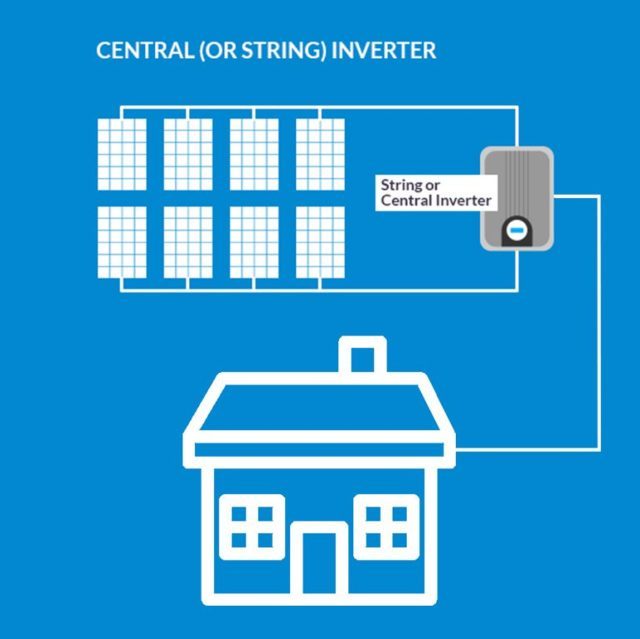
3.2 – Central inverter
The central inverter is the same as the string inverter but the system is larger and supports additional chains of panels. The wires will be connected to each other through a common combo called a combinerbox and then to the inverter to convert the DC power to AC, instead of going directly to the inverter.
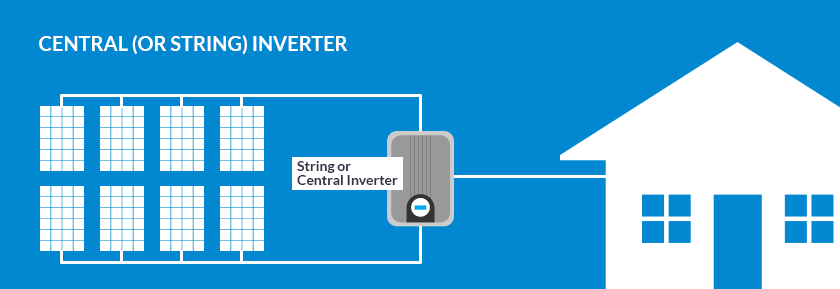
Solar inverters range from hundreds of kW and can handle up to 500kW. With this system, it is often used for large commercial buildings, solar farms, not for households.
3.3 – Micro inverter
Micro inverter, whether for commercial or residential purposes, this is also a good choice. Because the inverter will combine directly with a solar panel to convert DC to AC power on the spot. As a result, it is possible to optimize the performance of all solar panels independently. Helps to get more power if the battery rig is shaded.
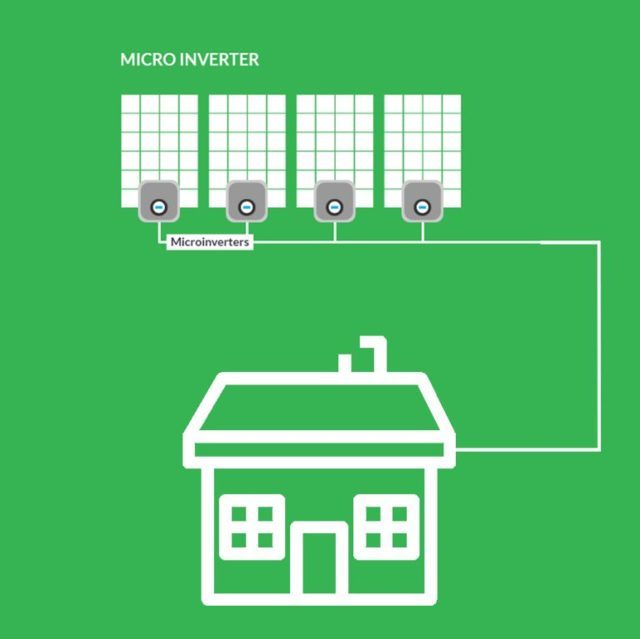
3.4 – DC inverter optimal form
The DC optimized inverter is also known as the DC Optimizer Power, meaning that each panel will be fitted with a DC optimizer before being transferred to the inverter. This can help to solve the limitations of string solar inverters. For example, if some panels have reduced power production due to shading, the DC optimizer will ensure that the panels are not affected in the same way..
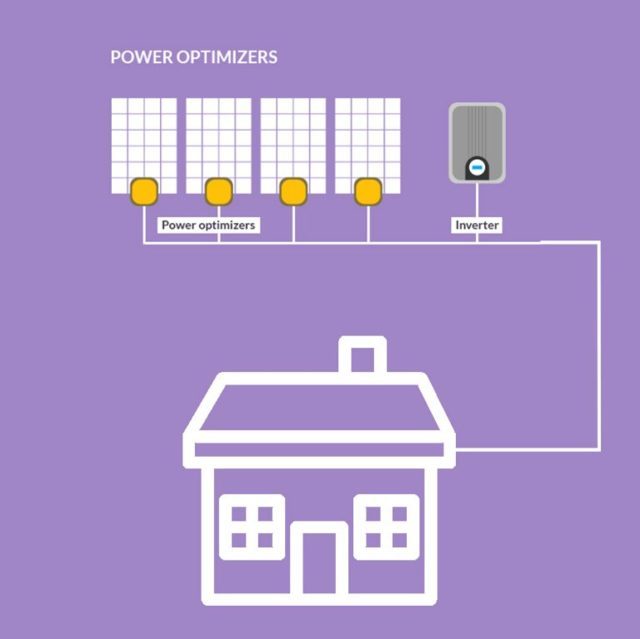
4 – Advantages and disadvantages
4.1 – Advantages
+ The use of solar energy reduces the greenhouse effect
+ Reduce the cost of electricity bills
+ Only need to install once, the system is self-operated, no additional labor required.
+ Simple and easy installation.
+ Simple maintenance
+ For small businesses, it helps to save energy effectively.
4.2 – Disadvantages
Limitations of solar inverters:
+ High cost but can be used for a very long time
+ Need a location with lots of sunlight
+ Takes up a lot of space for installation
+ Need an extra battery to be able to operate at night
Thus, you can understand what an inverter of a solar energy system is. However, to be able to choose the right one to suit your needs, you need to consider more. Please contact us for a free consultation and choose the right type of solar inverter according to your needs and purposes..

 Tiếng Việt
Tiếng Việt